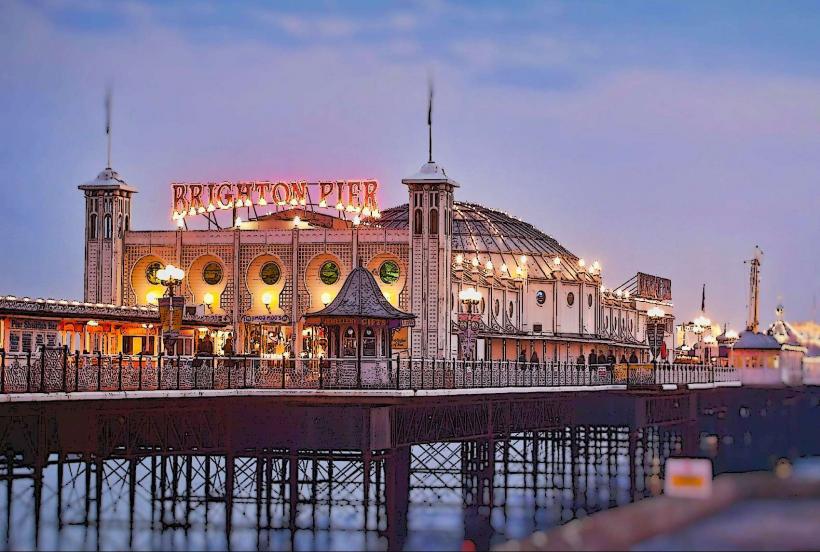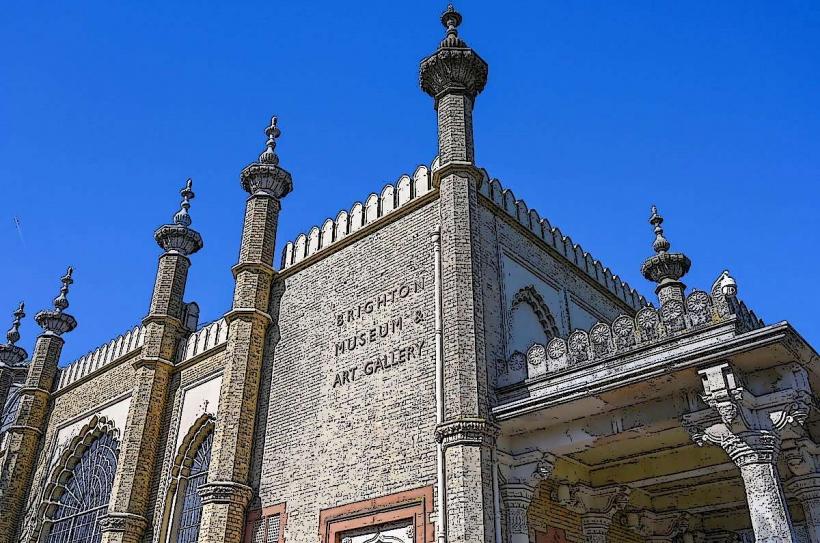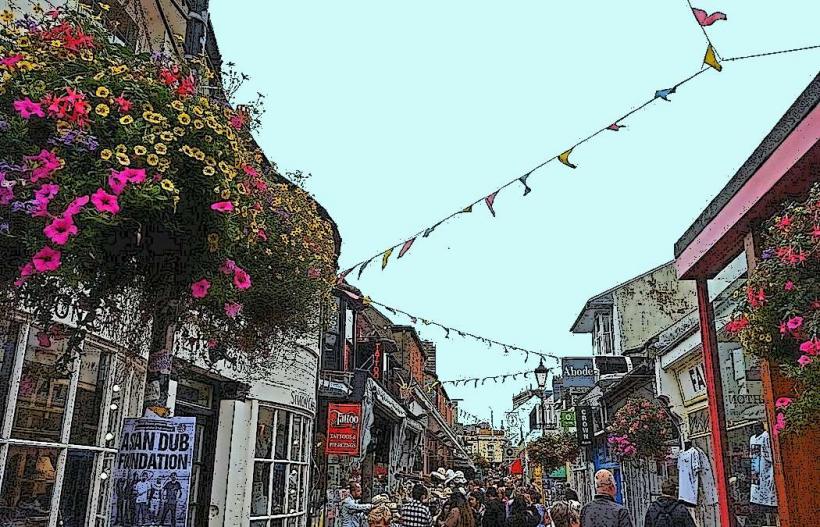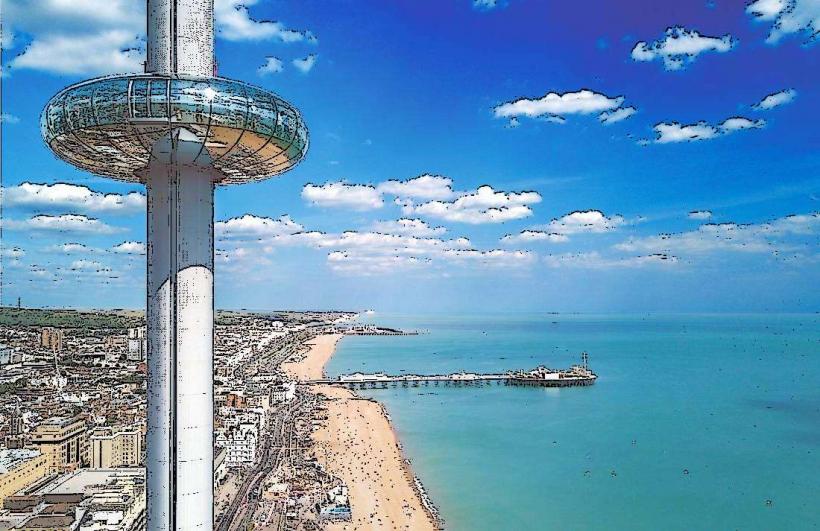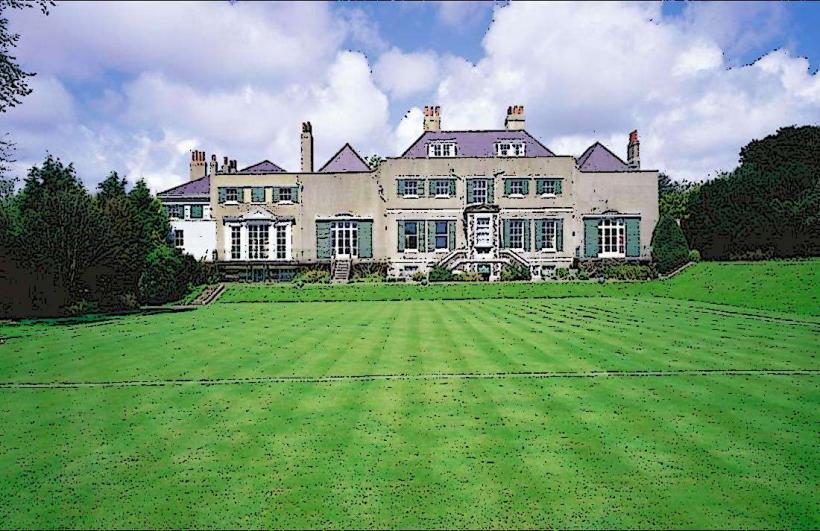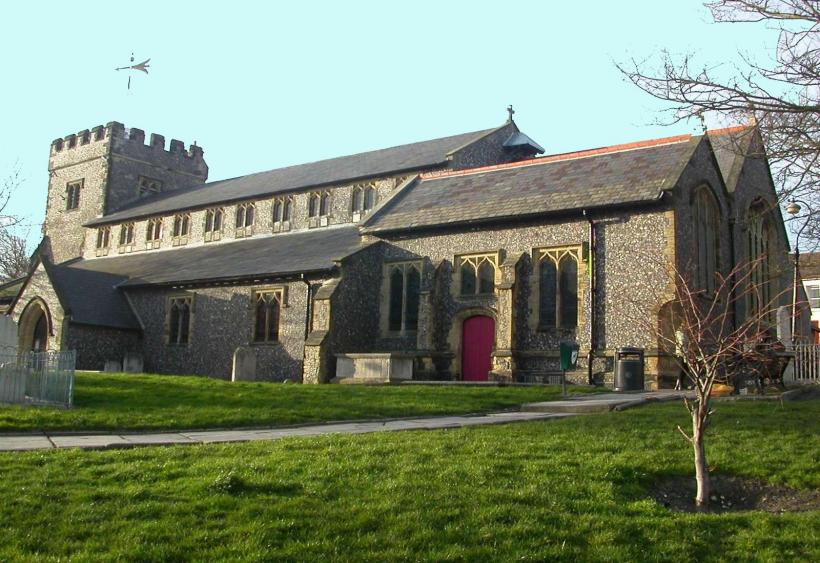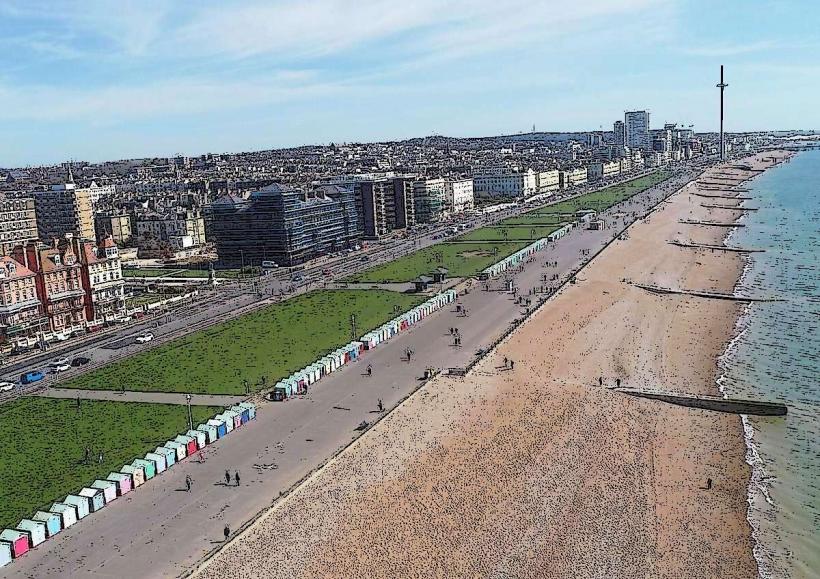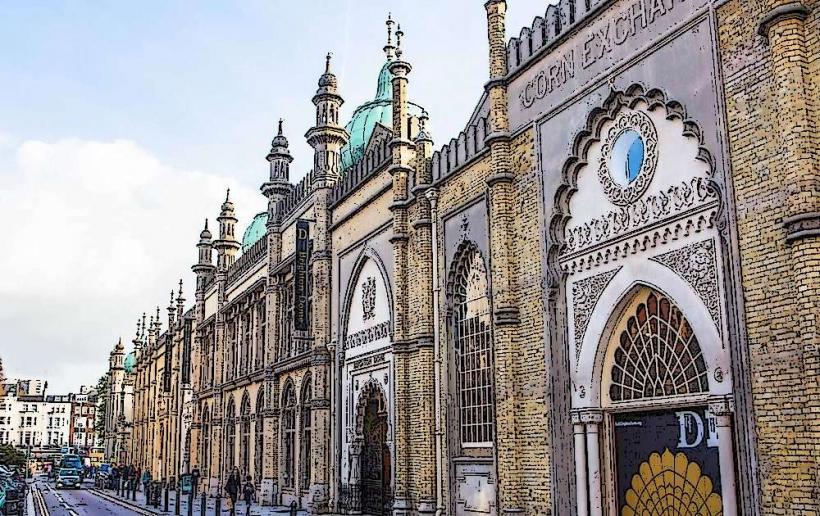Information
Landmark: Royal PavilionCity: Brighton
Country: United Kingdom
Continent: Europe
The Royal Pavilion in Brighton, also known as the Brighton Pavilion, is one of the most distinctive and architecturally significant buildings in the United Kingdom. A former royal residence, it combines a blend of Indian and Chinese architectural styles, making it one of the most exotic and eclectic buildings in Europe. Situated in the heart of Brighton, it attracts visitors with its ornate design, royal history, and its status as a key cultural landmark.
History and Background
1. Origins and Early History
The Royal Pavilion’s origins trace back to 1787, when Prince George, later George IV, first visited Brighton. At the time, Brighton was emerging as a fashionable resort town, and the Prince was seeking a retreat where he could escape the pressures of court life in London. Initially, the Pavilion was a modest farmhouse known as The Marine Pavilion, but after George’s frequent visits, it was transformed into a more elaborate structure.
2. Architectural Transformation
The design of the Pavilion was overseen by the Prince himself, and it went through several phases of expansion and renovation during his reign. The most significant changes were made under the direction of two key figures:
- Henry Holland, the architect who was tasked with expanding the building into a large and impressive palace in the 1790s.
- John Nash, the architect responsible for the grand redesign between 1815 and 1822. Nash introduced the Indian-inspired and oriental elements that define the Pavilion’s unique appearance, making it one of the most celebrated examples of Regency architecture.
3. Royal Use
The Royal Pavilion became a favorite residence for George IV, who spent much of his time there. It was lavishly furnished to match the exotic and opulent designs of the building. George’s successor, William IV, also used the Pavilion as a retreat. However, it was under Queen Victoria that the Pavilion's use as a royal residence was phased out. Queen Victoria found the Pavilion too small and impractical for her needs, and by 1850, the royal family had largely stopped using the building.
4. Post-Royal Use and Preservation
After its royal use ended, the Pavilion went through several phases of public ownership. In 1850, it was bought by the City of Brighton, which was eager to preserve the building and open it to the public. Over the years, the Pavilion has undergone various restorations to preserve its unique architectural features and interiors.
The building was fully restored in the late 20th century, and in 1991, it was reopened to the public after a significant restoration project funded by public and private donations. Today, it remains a popular tourist attraction and is managed by the Royal Pavilion & Museums Trust.
Architecture and Design
The Royal Pavilion is renowned for its fusion of architectural styles, blending elements of Indian, Chinese, Gothic, and Classical design. The result is a visually stunning building with distinct and unusual features that make it stand out as one of the most unusual royal residences in Europe.
1. Exterior Features
The most striking feature of the Royal Pavilion is its Indian-inspired design, often referred to as “Indo-Saracenic” architecture. Key elements include:
- Onion domes: These large, bulbous domes are a hallmark of Indian architecture, and they give the Pavilion its exotic appearance.
- Decorative minarets: Inspired by Islamic architecture, these minarets are found on the corners of the building.
- Chinese-style pagoda roofs: The Pavilion incorporates pagoda-like roofs that evoke Chinese architectural influence, particularly on the building’s entry pavilions.
- Elaborate ironwork: The exterior features ornate iron railings and gates with intricate designs.
2. Interior Design
The interior of the Royal Pavilion is equally grand and exotic, designed to reflect the luxurious lifestyle of George IV. Some of the most notable rooms include:
- The Music Room: This is perhaps the most famous room in the Pavilion, with its stunning vaulted ceiling decorated with gilded patterns, chinese wallpaper, and hand-painted motifs. The room is used for concerts and other cultural events, making it a central space in the building.
- The Banqueting Room: This is one of the most lavish rooms in the Pavilion, decorated with chinoiserie designs, including intricate woodwork and tapestries. The room was originally used for large banquets and parties.
- The Drawing Room: The Drawing Room is a regal and elegant space featuring luxurious furnishings, including gilded mirrors, velvet drapes, and intricate carpets.
- The Great Kitchen: The Pavilion’s kitchens were state-of-the-art for their time, capable of serving elaborate royal banquets. The large kitchen is open to the public and offers a glimpse into how meals were prepared for the royal family.
3. The Gardens
The Royal Pavilion Gardens are located around the Pavilion and serve as a tranquil escape from the bustling city center of Brighton. These gardens were designed in the 19th century and have undergone restoration to maintain their historical character. The gardens include lush greenery, ornamental flowers, and well-maintained paths, making them a popular spot for visitors to relax.
Key Features and Artifacts
The Royal Pavilion is home to a remarkable collection of art, furniture, and decorative objects that reflect the tastes and extravagant lifestyle of George IV and the Regency period:
- Furnishings: The Pavilion is filled with elegantly designed furniture, much of which was specifically commissioned by the Prince. Many of these pieces are in the chinoiserie and Gothic revival styles, typical of the time.
- Portraits and Artworks: The Pavilion contains several portraits of the royal family, as well as paintings depicting scenes from the Regency era.
- Chinese and Indian Artifacts: Reflecting George IV’s passion for oriental art, the Pavilion houses a rich collection of Chinese ceramics and Indian textiles.
Visitor Experience
1. Exhibitions and Tours
Visitors to the Royal Pavilion can enjoy guided and self-guided tours of the building. Exhibitions throughout the year focus on various aspects of the building’s history, the royal family, and the art and architecture of the Pavilion. The interior rooms are furnished with many of the original antiques, giving visitors a chance to experience the grandeur of Regency-era royal life.
- The Royal Pavilion Tour offers an opportunity to explore the highlights of the Pavilion and learn about its design, history, and royal connections.
- The Garden Tour gives visitors insight into the design and upkeep of the Pavilion's beautiful gardens.
2. Café and Shop
The Royal Pavilion has a café located in its grounds, offering light meals, drinks, and pastries. It provides a lovely setting for visitors to relax and enjoy the peaceful atmosphere of the Pavilion grounds.
There is also a gift shop, selling a range of souvenirs, books, and items related to the Pavilion’s history and the art and architecture of the Regency period.
Events and Activities
The Royal Pavilion hosts a variety of events throughout the year, including:
- Concerts in the Music Room, featuring classical performances and live music.
- Seasonal events such as Christmas markets and special exhibitions.
- Educational programs for schools and families, offering a deeper understanding of the history and significance of the Pavilion.
Visitor Information
- Opening Hours: The Royal Pavilion is generally open year-round, with varying hours depending on the season. It is open every day except for a few major holidays.
- Admission: Entry fees apply to visit the Pavilion, with discounted rates for children, seniors, and students. It’s often recommended to book tickets in advance, especially during peak tourist seasons.
- Accessibility: The Pavilion is fully accessible, with ramps and lifts available for those with mobility needs.
Conclusion
The Royal Pavilion is a must-visit for anyone interested in British history, royal heritage, and architectural design. Its exotic appearance, opulent interiors, and fascinating history make it one of the most unique and celebrated landmarks in the UK. Whether you're drawn to its grandeur, its quirky mix of architectural influences, or its royal connections, the Royal Pavilion offers a memorable and enriching experience in the heart of Brighton.

